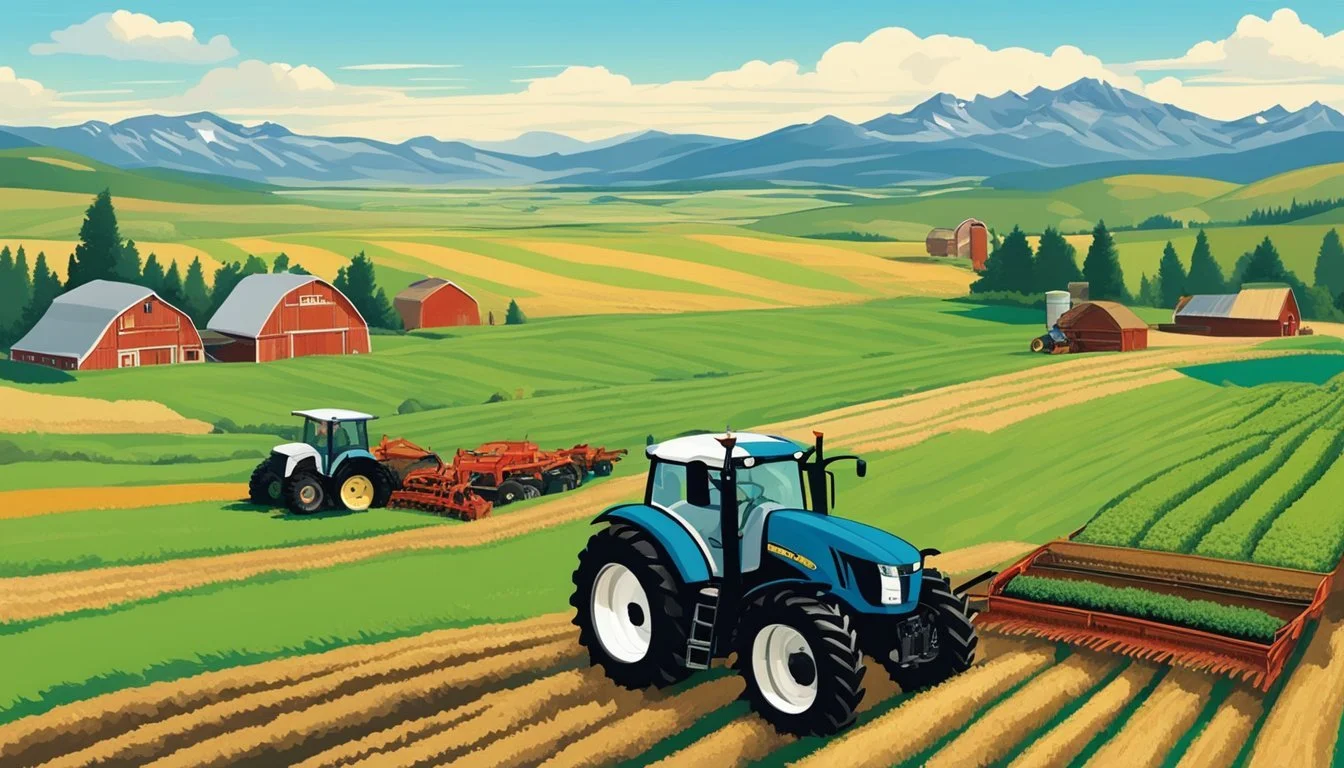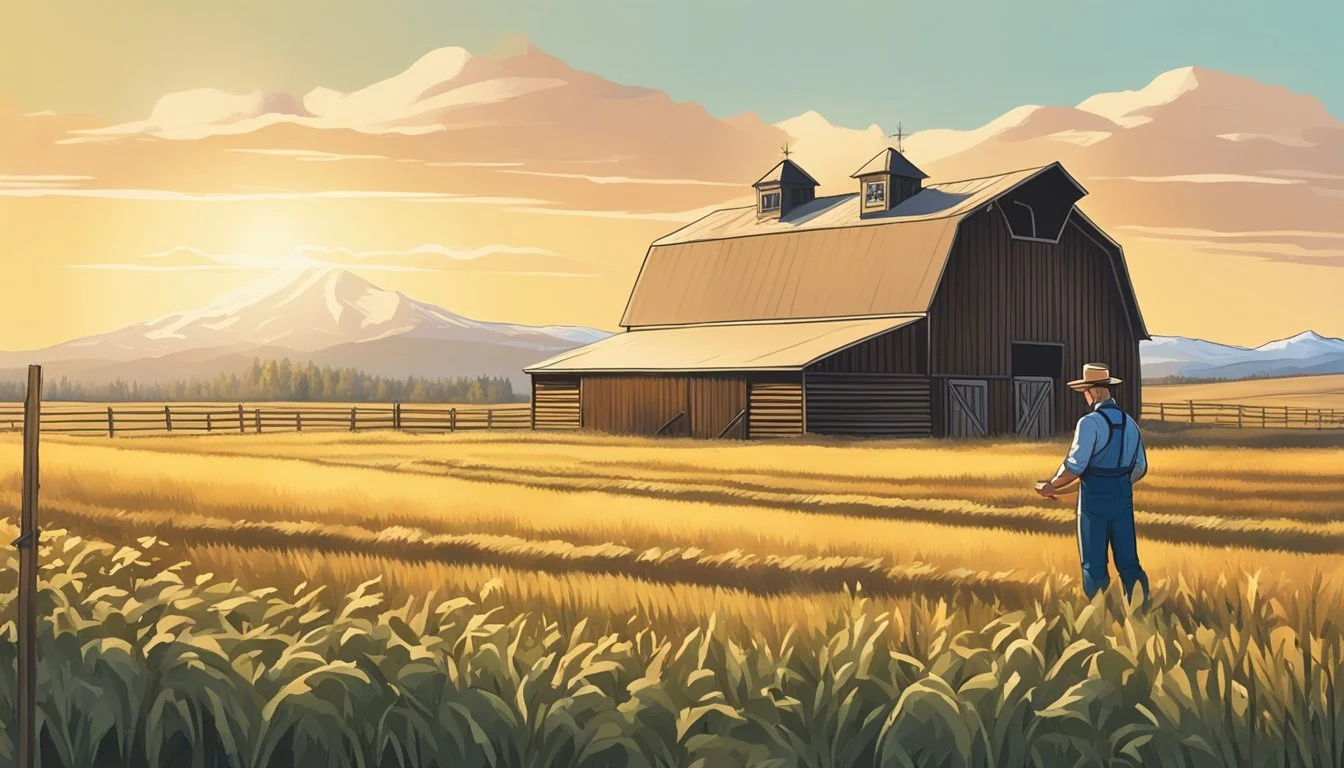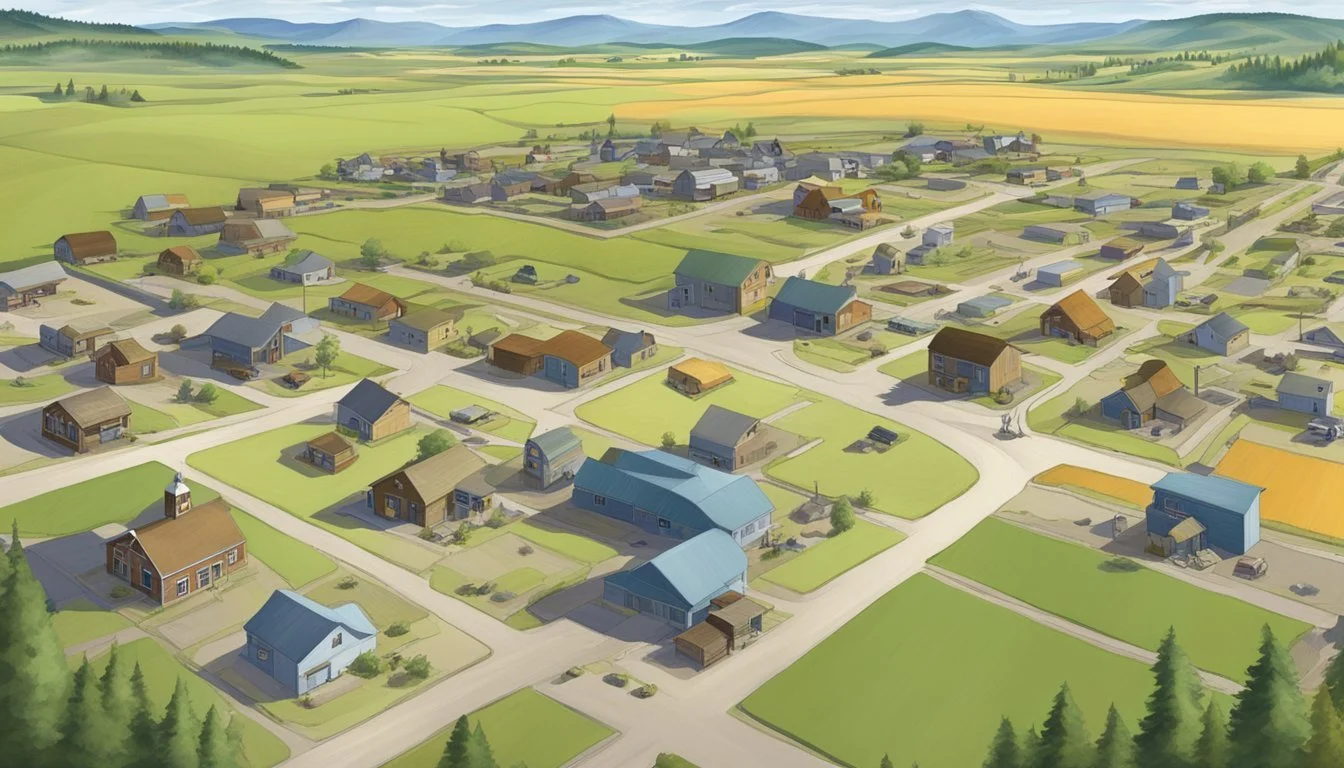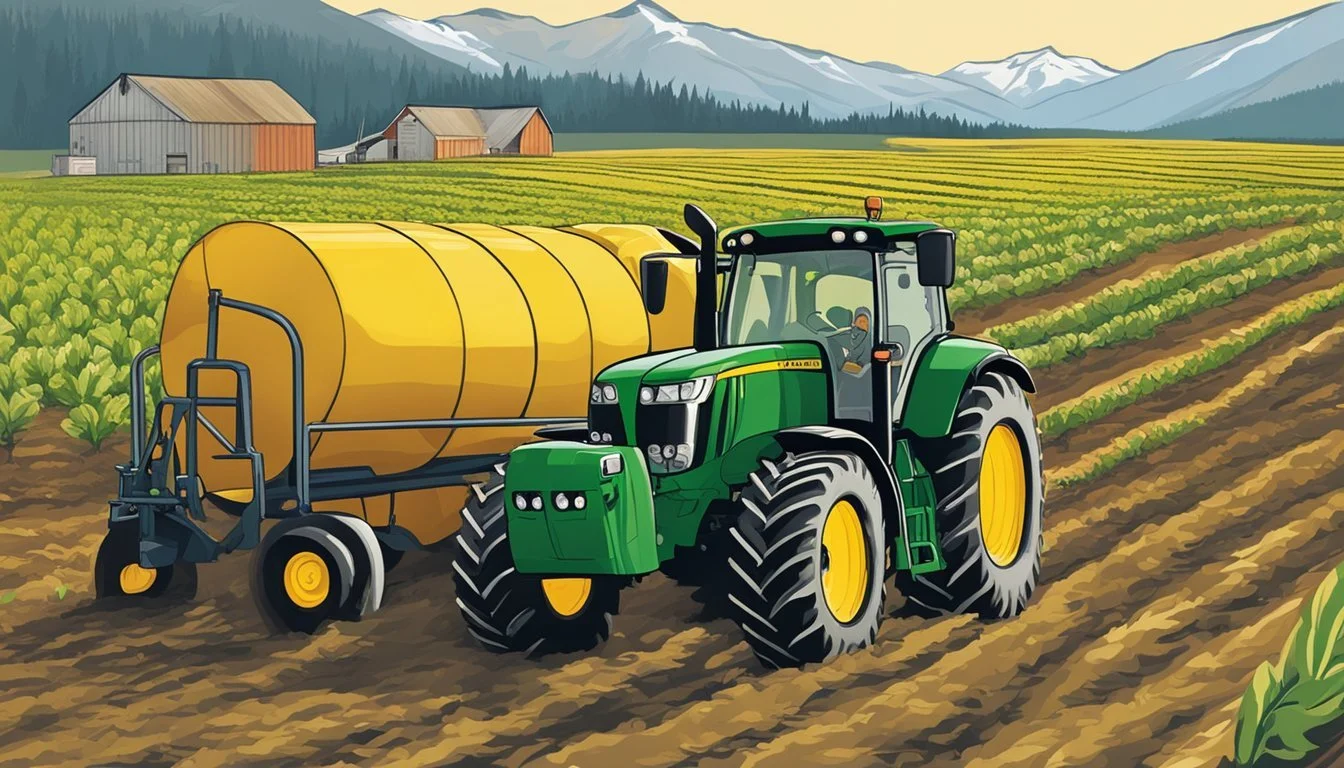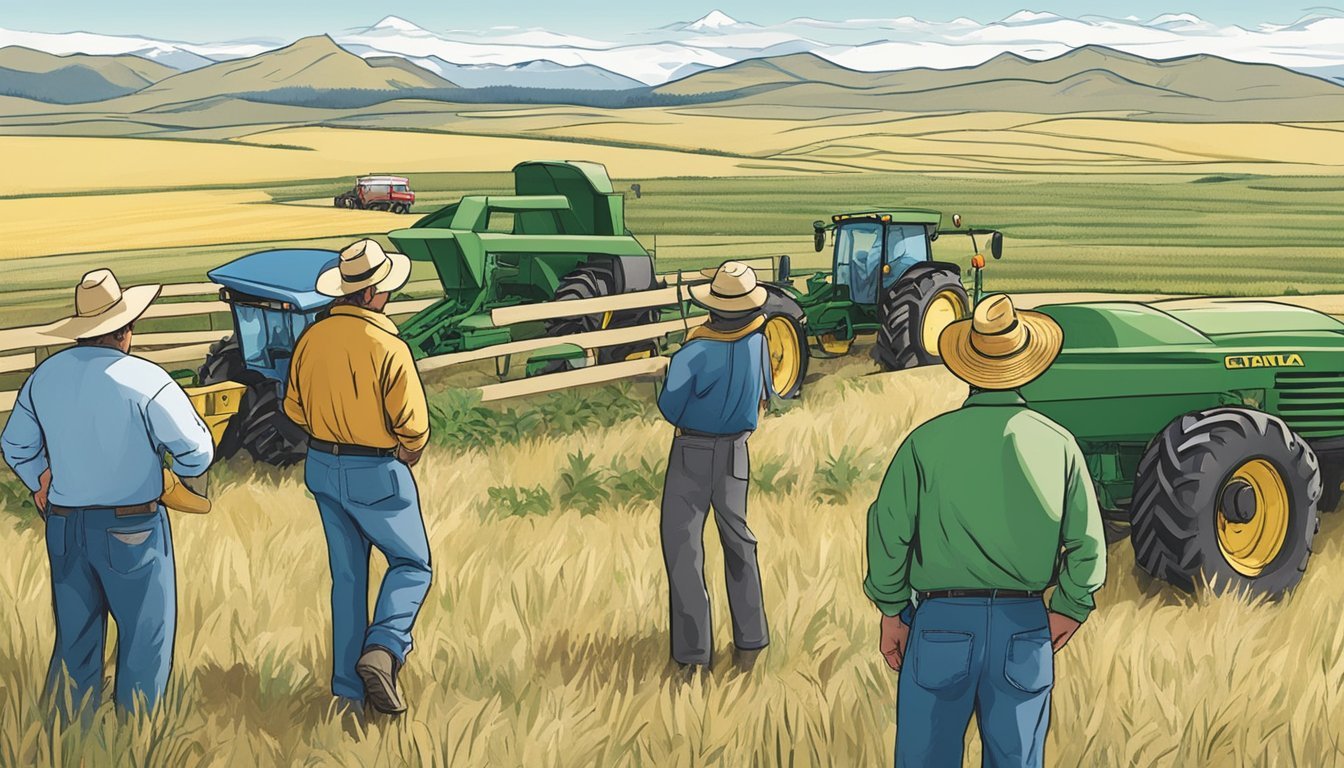Farming Grants Montana
Navigating Opportunities for Agricultural Funding
Montana's agricultural sector offers vast opportunities for farmers and ranchers, but the high costs of equipment, land, and resources can pose significant barriers to entry and growth. To support this key industry, various farming grants and financial assistance programs are available in the state. These grants aim to enhance the competitiveness of specialty crops such as fruits, vegetables, tree nuts (how long do nuts last?), dried fruits (What wine goes well with dried fruits?), horticulture, and nursery crops. Funded by the federal USDA Farm Bill, the Specialty Crop Block Grant Program represents a vital source of support for these producers, ensuring they have the necessary resources to thrive.
For individuals at the inception of their agricultural careers, the Montana Beginning Farm/Ranch Loan Program offers a significant leg-up. Tailored to assist new farmers and ranchers in acquiring agricultural property, this program provides tax-exempt bond financing to reduce interest rates on property loans. This financial advantage can make a crucial difference in overcoming the initial economic challenges facing beginning farmers and ranchers.
In addition to these, the state provides Growth Through Agriculture (GTA) Grants and Reclamation and Development Grants to support a variety of agricultural projects and needs. From expanding and diversifying marketing opportunities to addressing environmental concerns like reclamation of mining sites, these grants back initiatives aimed at fostering long-term growth and sustainability in Montana's agriculture sector. Through this financial assistance, the state helps local economies in rural and Tribal areas, ultimately aiming for a more prosperous agricultural landscape under Big Sky Country.
Understanding Farming Grants in Montana
Montana's agricultural sector has various grant opportunities designed to enhance and diversify farming activities across the state, aimed at producers and agri-businesses.
Overview of Grant Opportunities
Montana offers grants to bolster its agricultural industry, which includes a vast array of specialty crops and initiatives for rural development. Grants come from several sources, primarily federal funds through the USDA Farm Bill or state-established programs to encourage growth in agriculture.
Eligibility Criteria for Applicants
To qualify for farming grants in Montana, applicants must often meet specific criteria. These can pertain to the type of agriculture business, such as fruit, vegetable, or nursery crop producers, the scale of their operations, or geographic location within the state. In the case of some grants, being part of the specialty crop industry is a requisite, while others may focus on broader agricultural development or rural economic initiatives.
Types of Grants Available
Specialty Crop Block Grants: Aimed at enhancing the competitiveness of specialty crops in Montana. These may cover fruits, vegetables, tree nuts, dried fruits, and horticultural-related industries.
Growth Through Agriculture (GTA) Grants and Loans: Established by the legislature, these funds assist with creating new agricultural products and processes.
Type Purpose GTA Business Acceleration and Marketing Program Supports businesses in expansion phases and market development. Trade Show Assistance Helps producers to access new markets and customers at trade events.
Rural Economic Development Loan & Grant Program: Supports local projects with a focus on rural development, offering both grants and loans.
Maximum Grant Amount Use $300,000 Establish a Revolving Loan Fund for rural projects. Funds may also cover a portion of operational expenses. Maximum Loan Amount $2 million for local utilities to support specific local projects. Projects may begin post submission.
Each grant has its terms of use, eligibility, and application process, and they are pivotal for maintaining and advancing Montana's position in agriculture.
Loan Programs for Farmers and Ranchers
In Montana, a range of loan programs is available to support the financial needs of farmers and ranchers. These programs offer favorable terms such as lower interest rates and guaranteed credit, aiding in land purchase, operating costs, and more.
FSA Loans and Credit Options
The Farm Service Agency (FSA), a branch of the USDA, provides various loan options for farmers and ranchers. These include direct loans, which come straight from the FSA, and guaranteed loans, where the FSA guarantees loans made by commercial lenders. This backing ensures farmers and ranchers receive financial support even if they don't qualify for traditional loans. Direct loan funds can be used for a wide range of purposes, including farm ownership, operating costs, and emergency needs.
USDA Loan Programs
The USDA oversees a suite of loan programs aimed at aiding beginning and underserved farmers and ranchers. The USDA emphasizes support to these groups to foster the next generation of agricultural professionals. Their offerings include ownership loans, which can be used to acquire land and essential amenities, and operating loans to cover costs such as equipment and supplies. Interest rates for USDA loans are often below standard commercial rates.
Commercial Lending for Agriculture
Commercial lenders in Montana provide agricultural loans with terms designed to accommodate the unique challenges of the farming and ranching industry. When a beginning farmer or rancher is not eligible for government assistance or requires additional funding, commercial credit becomes a vital resource. These loans might carry higher interest rates than government-backed options and typically require a thorough financial check by the lender. However, they offer additional avenues for farmers and ranchers to access the necessary capital.
Agricultural Business Development
Montana's agricultural sector offers significant opportunities for entrepreneurs and established businesses looking to start, innovate, or expand. Strategic investment and marketing acumen are critical for cultivating economic growth and capitalizing on new market opportunities in this dynamic industry.
Starting and Expanding Agricultural Businesses
In Montana, the agricultural business landscape is actively evolving, with a focus on innovation and sustainability. Beginning Farm & Ranch Loans are designed to support new entrants in agriculture, providing the necessary capital to jumpstart their ventures. This financial support is crucial for fostering a new generation of agricultural entrepreneurs who bring fresh ideas to the sector, ensuring the long-term vitality of Montana's farming community.
Funding Opportunities for Business Growth
Montana's Growth Through Agriculture (GTA) program extends financial aid to agricultural businesses that are ready to scale up and reach new markets. The GTA Business Acceleration and Marketing (BAM) Program, in particular, provides grants for businesses that are entering expansionary growth phases. Additionally, the Rural Business Development Grants (RBDG) program aims to facilitate equitable access for tribes and tribal business enterprises, with applications typically closing around April 1st.
Marketing and Promotion Strategies
Effective marketing and promotion are essential for Montana's value-added agricultural producers. The Montana Department of Agriculture Market Development Program and Business Accelerator program support a variety of promotional activities:
Product development and commercialization
Tradeshow expenses
Website development
These initiatives are instrumental in enhancing visibility and driving consumer engagement. Moreover, the USDA's Value-Added Producer Grants program encourages producers to maximize the value of their agricultural products by exploring creative marketing strategies and entering new, profitable markets.
Resources for Beginning Farmers and Ranchers
Montana offers a variety of resources designed specifically to support beginning farmers and ranchers in their ventures. From educational programs to grants and access to land and capital, the opportunities available aim to facilitate a strong start in the agricultural industry.
Educational Programs and Leadership Opportunities
Montana provides educational resources to enhance the knowledge and skills of beginning farmers and ranchers. Entities such as Farm Link Montana offer not only vital information but also guidance on how to navigate the complexities of starting and managing an agricultural business. These educational programs ensure that new entrants are well-prepared with the relevant expertise to succeed.
Montana Stockgrowers Association and other similar organizations sometimes provide leadership opportunities, enabling new farmers and ranchers to connect with experienced professionals and acquire insights on effective agricultural practices and innovative farming techniques.
Grants for New Entrants
Starting an agricultural operation can be costly. Montana addresses this challenge by offering grant programs to support financial needs. Notably, the Beginning Farm/Ranch Loan Program assists in acquiring agricultural property through tax-exempt bond programs that lower interest rates. Additionally, grants may be available for generating new products, fostering innovation in farming methods, and enhancing market competitiveness.
Access to Land and Capital
Accessing land and capital can be a significant hurdle for new farmers and ranchers. To alleviate this, the aforementioned Beginning Farm/Ranch Loan Program in Montana assists individuals in purchasing agricultural land and depreciable property to establish and expand their operations. Financial institutions collaborate with these programs to ensure beginning farmers and ranchers have the fiscal support required to secure essential resources for their farms and ranches.
Infrastructure and Community Development
The state of Montana offers various grants aimed at enhancing its agricultural infrastructure and supporting rural community development. These grants focus on upgrading facilities, improving housing options, bolstering energy efficiency, and fostering renewable energy adoption.
Investments in Rural Infrastructure
Montana's agricultural landscape benefits significantly from federal and state funding aimed at infrastructure enhancements. The Resilient Food Systems Infrastructure Program Cooperative Agreements (RFSI) allocate funds to bolster the capacity for local food product processing and distribution activities. This includes handling of specialty crops, dairy, and grains, vital for Montana's food systems.
The Agriculture Infrastructure Grant Program strategically invests in value-added agriculture projects, which catalyze Montana’s agricultural industry. These projects are imperative for establishing a robust infrastructure base that enables efficient food processing and transportation.
Housing and Community Facilities Fund
Housing and community facilities represent crucial aspects of sustainable rural development. In Montana, programs such as the Rural Community Development Initiative Grants aim to improve the quality of life in rural areas by providing financial assistance for housing and essential community facilities construction and renovation. Rural Development State Offices are instrumental in facilitating these projects, aligning them with the enhancement of local economies and the well-being of residents.
Energy Efficiency and Renewable Energy Projects
There is a strong emphasis on integrating energy efficiency improvements and renewable energy projects in Montana's rural sector. Initiatives such as the USDA Rural Development's Value-Added Producer Grant (VAPG) program support local small businesses and agricultural producers in adopting practices that reduce energy consumption and introduce alternative energy sources. These efforts contribute to the creation of a greener, more sustainable agricultural environment, thus complementing the state's rich natural resources with responsible energy management.
Grants also support critical state needs, including drought and flooding response infrastructure, through Reclamation and Development Grants Projects. Moreover, the Renewable Resource Grants focus on projects that manage and conserve Montana's natural resources, promoting environmentally sound development practices.
Programs for Specific Agricultural Sectors
Montana’s varied agricultural sectors can benefit from targeted programs that provide financial support and encourage competitive enhancement. These initiatives are tailored to cater to the distinctive needs of livestock, dairy, meat, poultry, and specialty crop producers, as well as to facilitate ongoing research and development for crop improvement.
Livestock and Poultry Sector Programs
Montana's Livestock and Poultry Sector Programs dedicate funds to support animal health, productivity, and market expansion. Initiatives under this umbrella offer financial assistance for a variety of purposes, including livestock and poultry infrastructure improvements and disease mitigation efforts. They also aim to augment marketing opportunities for producers, thus strengthening Montana's position in these sectors.
Dairy, Meat, and Specialty Crop Supports
The state offers specific assistance for the dairy and meat sectors, with programs designed to aid producers in expanding their market presence and enhancing product quality. Simultaneously, support for specialty crops is robust, nurturing growth through initiatives funded by the USDA Farm Bill. For example, the Specialty Crop Block Grants focus on boosting Montana's specialty crops like fruits, vegetables, tree nuts, dried fruits, horticulture, and nursery crops.
Research and Development for Crop Improvement
Investments in research and development are critical for the advancement of crop agriculture. These efforts often lead to improved crop varieties, better resilience to diseases, and enhanced productivity. Programs in Montana facilitate collaboration between farmers and researchers, ensuring that progress in research directly translates into tangible benefits. Through grants and other types of funding, research projects related to agricultural science have the potential to markedly benefit Montana's farming communities.
Applying for Grants and Loans
Farming grants and loans in Montana offer a vital source of financial support to the agriculture industry. Navigating the application process, understanding match funding requirements, and mastering the art of proposal writing are key steps farmers and agricultural businesses need to undertake with precision.
Navigating the Application Process
When applying for farming grants and loans in Montana, applicants should start by identifying the right program that fits their project needs. Programs like the Renewable Resource Grants and the Rural Assistance Loans are available to support a variety of agricultural initiatives. Prospective applicants must carefully review eligibility criteria and deadlines, typically found on the Montana Department of Agriculture's website. They should prepare the necessary documentation, which often includes a detailed project description, budget, and past financial statements.
For example, the Rural Assistance Loan Program requires a non-refundable $35.00 application fee and additional documentation as deemed necessary by the Montana Department of Agriculture Loan Committee. Applicants should be ready to provide extensive project details and comply with the specific requirements of the grant or loan for which they are applying.
Understanding Match Funding Requirements
Many grant programs require the applicant to provide match funding as a part of the application. This is a share of the project's cost that the applicant must finance. Match funding can be a deciding factor in the success of a grant application and demonstrates the applicant's commitment to the project.
For the Specialty Crop Block Grants, the focus is on enhancing the competitiveness of specialty crops, and applicants must often match the funds received with their own investment or other non-federal sources. It is crucial for applicants to understand the percentage of the match required and whether in-kind contributions are acceptable.
Proposal Writing and Submission
Writing a compelling proposal is crucial in securing grant or loan funding. The proposal should clearly articulate the project's objectives, the methodology to be used, and the expected outcomes, aligning closely with the grant's goals. Applicants should highlight how their project addresses state needs such as drought, reclamation, or agricultural competitiveness. The Growth Through Agriculture (GTA) Program, for instance, has specific submission deadlines that applicants must adhere to.
Proposals must be submitted by the designated deadline, and applicants can often benefit from application assistance, which may include grant writing workshops or one-on-one support from program administrators. This assistance can be crucial for applicants unfamiliar with the grant-writing process.
A well-structured proposal will typically include the following elements in a clear and concise manner:
Project Summary: An overview of the project's aims and significance.
Needs Statement: Justification for why the project is necessary and how it aligns with grant objectives.
Objectives and Outcomes: Specific goals and the measurable impact expected.
Methodology: The approach and activities planned to achieve the objectives.
Budget: A detailed financial plan outlining how funds will be allocated and any matching funds provided.
By systematically addressing all required components and adhering to the specific guidelines of each program, applicants can enhance their prospects of receiving agricultural funding support in Montana.
Support and Assistance for Applicants
Montana offers a robust array of support and assistance for applicants seeking farming grants. From technical advice to cooperative initiatives and educational services, resources are readily available to facilitate and empower agricultural endeavors.
Technical Support from Agencies
Montana Department of Agriculture (MDA) and the USDA Rural Development agency provide extensive technical assistance to grant applicants. They offer guidance on best practices for crop development and help in understanding the complexities of grant applications. Farmers.gov serves as an online resource to connect farmers with the necessary tools and contacts.
Cooperative Agreements and Partnerships
Cooperative agreements between farmers and the MDA foster mutual benefits in agricultural growth. These partnerships can significantly streamline the process of receiving grants by clarifying objectives and leveraging collective resources for individual and communal gain. They also aid in meeting requirements for conservation practices that may be tied to grant eligibility.
Outreach and Education Services
Education services are a cornerstone of the support system for grant applicants in Montana. These services provide vital information on available grants, application procedures, and deadlines. The outreach efforts ensure that farmers are well-informed about opportunities and are given the skills needed to compete for funding successfully.
Federal and State Agricultural Policies
Federal and State policies play a crucial role in shaping the agricultural landscape. They determine the level of support and infrastructure provided to farmers and can greatly impact the agricultural economy.
Impact of Biden-Harris Administration Policies
Under the Biden-Harris Administration, the United States Department of Agriculture (USDA) has seen increased funding and support for various grant programs designed to enhance the agriculture sector. A key focus has been on the Specialty Crop Block Grant Program, which aims to bolster the competitiveness of specialty crops, including fruits, vegetables, and tree nuts. This aligns with broader federal initiatives to foster sustainable farming and fair market access.
Montana State Agricultural Programs and Regulations
In Montana, state-level programs and regulations complement federal policies to support the agriculture industry. For example, with the introduction of the Growth Through Agriculture (GTA) Business Acceleration and Marketing (BAM) Program, the Montana Department of Agriculture underscores its commitment to assisting value-added agricultural producers during expansionary phases. Policies favoring value-added activities help in generating new products, thus aiming to increase producer income and expand market opportunities.
Grant Details:
Program Focus Area Priority Recipients Value-Added Producer Grant (VAPG) Value-added activities Beginning farmers, socially-disadvantaged farmers
Future Directions and Policy Changes
Looking to the future, policy changes are anticipated to continue adapting to the changing needs of the agricultural sector. Infrastructure, encompassing both physical and market-based frameworks, remains a significant focus, emphasizing the need for rural development. These policies are monitored and regulated from the capital, Helena, ensuring that Montana's agriculture aligns with overarching federal directives while catering to local needs. Anticipated updates may reflect shifts in global market demands, environmental challenges, and the advancement of agrotechnology.
The USDA, leveraging programs and funds, actively supports agricultural producers. News releases highlighted over $4.5 million in grants awarded to Montana agricultural producers in early 2024, demonstrating an active stance on enhancing the state's agricultural output.

